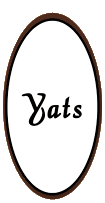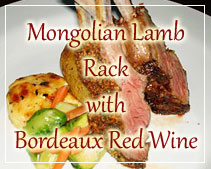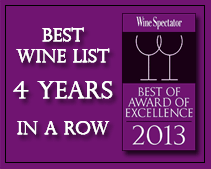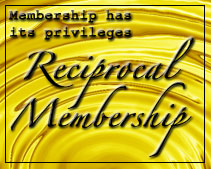Pampanga Clark Philippines: How to Host a Wine Tasting
February 6, 2011
Nothing contributes more significantly to your wine experience than tasting. It’s kind of like learning to play an instrument; it’s helpful to know how to read music, but ultimately, there’s no substitute for practice.
Coming together with a group of fellow wine enthusiasts is a fantastic way to exercise your tasting muscles. A group atmosphere offers participants the opportunity to share opinions and conclusions, shaping and strengthening each individual’s appreciation of the wine. The concept is similar to that of a book club. Sure, you can enjoy a novel on your own. But getting together with a group of people who have read the same book can enhance your appreciation and understanding of the story.
The following article shows you the key steps in hosting a wine tasting — from the planning stage to choosing a theme — so that it will be a truly meaningful experience. We’ll start by addressing a few basics you should consider when planning a wine tasting.
Blind Tasting
Organizing a wine tasting is easy; all you’ll need are good friends and (hopefully) good wine. Whether you decide to plan an occasion that’s formal and serious or casual and low-key, a blind tasting (where the tasters don’t know which wine is in which glass) is your best bet. Concealing the wine’s identity is vital if purely sensory evaluations are to be made. Otherwise, the power of suggestion can cloud a taster’s ability to honestly evaluate a wine; impressions are likely to be influenced, whether consciously or unconsciously, by expectation rather than by what the senses actually encounter.
The More the Merrier?
So, how many people should you include in your tasting group? In general, the more the merrier! More tasters means more opinions, increasing the base for interaction. And if you plan to pool your resources to finance the wine purchases, more people can mean a wider range and/or better-class of wines. Still, keep in mind that a bottle of wine can only go so far. A regular (750 ml) bottle contains about 25 ounces. If a tasting sample is two ounces, one bottle can accommodate up to 12 people. But, if the group exceeds 12 participants, it will be necessary to either buy more than one bottle of each wine to be sampled or pour smaller tasting samples from a single bottle.
Before the first tasting, get your friends together for a planning session. Now is the time to work out the details so the event itself can be a festive, carefree occasion.
Choose a date and time for the get-together. Who will host the tasting? Will the host be responsible for setup and cleanup? For purchasing the wines? Decide in advance which group member will be responsible for each element of the event. After all, it’s impossible to have a tasting without the wine! Pick a site for the tasting. Make certain the location has sufficient table space and chairs to accommodate the tasters and their glasses. The most comfortable and hassle-free site is probably a cozy dining room. If this isn’t possible, then you’ll have to be creative. Does a group member have access to a semipublic room, such as a recreation room at a condominium or an apartment complex? If so, consider booking the room for the tasting. Other possibilities include a meeting room in an office suite or a separate room in a restaurant (the owner might be persuaded to make the room available if your group dines at the restaurant following the tasting).
Determine how many wines will be sampled. Agree on a minimum number, so the host will know how many wines to obtain. Also decide whether the tasters are to bring their own glasses. If so, consider tasting six wines; boxed stemware often comes in sets of six, and the compartmental boxes make carrying the glasses to and from the tasting much more convenient.
Decide how the wines will be paid for. Some wines might be significantly higher in price, and some tasters may drop out along the way, so it’s important to resolve this issue early on. Consider simply dividing the total cost by the number of people participating. Don’t forget to factor in any amount spent for bread or cheese! Or, take turns hosting (and paying for) the event. Perhaps you can make it a monthly get-together!
Create or obtain a tasting sheet. Many wineries have tasting sheets that can be adapted for the group’s purposes, or you can create your own. Whatever you choose to do, make sure to duplicate the form so that you have a copy for each taster.
The tasting sheet should include the number or letter that corresponds to each wine; space for comments; points awarded, if desired (the common systems are the 20-point and 100-point scales); an individual ranking, from first place to last place; and total group ranking points. To calculate total group ranking points, find out what ranking each taster gave each wine. If six people believe the same wine deserves to be in first place, it gets six group points (631=6); if they all put the wine in sixth place, it gets 36 points (636=36). The lower the total ranking score, the higher the group ranking for the particular wine.
Choose a tabulator and create a tabulator’s sheet. Decide which group member will act as the tabulator. This can change from tasting to tasting, or the same person can do it each time. The tabulator compiles each taster’s rankings as well as each taster’s point awards, if points are used (keep in mind that rankings are much more important than point values; awarding points is a very subjective exercise and can lead to considerable confusion). Design a sheet that enables the tabulator to readily calculate these figures. You might also want to develop simple slips of paper for group members to use to transmit their rankings (and scores, if used) to the tabulator.
Choosing a Wine-Tasting Theme
Coming up with a theme for a wine tasting requires some imagination; you have so many choices! To begin, decide whether the tasting will be vertical or horizontal.
A vertical tasting features the same brand of wine from different vintages: for example, Winery X Cabernet Sauvignons from 1995 to 2000. A horizontal tasting includes wines from different wineries that are the same type and vintage: for example, six different bottles of Alsace Gewurztraminer, each with a vintage date of 2000. A horizontal tasting can be as basic as comparing newly released varietals (like Cabernet Sauvignon or Chardonnay) that are from the same appellation or growing area. Or it can be much more complicated; it’s up to you!
Many resources are available to assist in coming up with a theme. If your group is just beginning to acquire some wine knowledge, a reliable wine merchant should be happy to suggest wines that fit the theme. If you’re operating within a budget, let the merchant know up front. Don’t make the mistake of pumping the merchant for advice and then going to a discounter to get a cheaper price; you make no friends that way.
Perhaps the next best thing to a wine merchant is a magazine or newspaper. Such publications are usually available at newsstands and wine shops. Or go online to find a helpful site. These sources feature wine-tasting notes, sometimes with point scores or evaluation symbols, sometimes without.
Obtain the wines that fit the theme. The individual paper bag in which each wine is wrapped before it leaves the store can be used to conceal the wine’s identity at the tasting. Make sure there are enough bags for all the wines (perhaps before you leave the store).
If the group can afford it, taste better-quality wines. Ordinary wines are for everyday drinking, not for group deliberation. Moderate-quality wines afford good tasting practice and can be interesting but often reflect a “sameness” that makes comparison difficult. The most vivid characteristics of a growing area or a vintage are most easily identified in a wine of higher quality.
Do some research on the wines to be tasted. Call the wineries or visit their Web sites for winemaker’s production data and tasting notes. Telephone numbers and Web addresses can often be found on back labels. Also consider copying pertinent tasting notes from published sources, and distribute them at the discussion stage of the tasting.
A few weeks in advance of the tasting, the host should remind everyone of the date and time. If all or most of your friends have e-mail, this should be a quick and easy task. Include the theme of the tasting, and remind the tasters to bring their own glassware, unless the host is providing the glasses. Also request that the participants avoid wearing cologne or perfume to the event.
It’s Almost Tasting Time!
If the wines are in the refrigerator, remove them about one hour before the start of the tasting so they can warm up a bit; wine that’s too cold can’t be adequately evaluated. Remove the foil capsules, pull the corks, and bag each wine. Secure the top of each bag with a rubber band, or simply twist the top of the bag around the neck of the bottle. Leave the task of numbering or lettering the bags to another participant (who hasn’t seen the wines being bagged), so that you can taste them blind too.
Get the table area set up with enough chairs for the participants. If possible, use a white table cover to make color and clarity evaluations easier. Each place setting should have
either a small spit bucket or a large plastic cup. Spitting is highly recommended to keep as clear a head as possible while all the wines are being evaluated. The group’s evaluation and reporting forms should also be at each place setting.
Put out a sufficient quantity of sliced plain baguettes and pitchers of water to act as palate cleansers. A water glass at each setting is thoughtful, as is a pencil or pen. Keep the tasting area free of strongly scented things, such as flowers or cooked foods.
How to Make the Most of Your Wine Tasting
There are some simple steps you can take to ensure that your wine tasting is a sparkling success.
No smoking and go easy on the cologne or perfume. Smoking at a tasting may be inconsiderate, even offensive, to many people, but it also seriously impairs the ability of the smoker and others nearby to evaluate the wines. For the same reason, avoid heavy use of cologne or perfume.
Keep talking to a minimum during evaluation. Although a wine tasting doesn’t have to be a solemn occasion, it also shouldn’t be a gab session, at least not until after the rankings (and scores, if used) have been turned in. There’s nothing more distracting than a chatterbox, except maybe two chatterboxes, in the tasting room.
Offer a short introduction. The host should give the tasters some general information about what’s in front of them. For example: “These are Pinot Noirs from the 2000 vintage; all come from Santa Barbara County. Prices range from $18 to $25.”
Pour small tasting portions. Wine glasses, one for each wine, should be set out in a semicircle in front of each taster. The bagged bottles (which have been numbered or lettered by someone other than the host) should be passed among the tasters so each can pour a small sample (approximately two ounces).
Consider purchasing a pouring disc, a great, inexpensive, reusable tool that facilitates pouring in measured amounts without dripping. Made of flexible heavy foil, these discs fold into a funnel shape and fit into the bottle opening. They come several to a packet and can be found in most wine stores.
If desired, tasters’ glasses can be lettered or numbered on the base with a wet-erase pen, available at most stores that sell stationery or office supplies. This avoids confusion if the glasses are moved out of order at some point. The number or letter on each glass should conform to the number or letter on the bag concealing the wine. The ink readily washes off the glass in warm water.
Hold off on eating until later. Spicy, aromatic foods, like sausages and heavy cheeses, can get in the way of pure wine evaluation. Sliced baguettes and cubes of mild, white cheese or simple water (without flavoring) are sufficient to clear the palate between sips. If desired, appetizers or a light meal can be organized to follow the tasting, or you can all sit down to a full meal; there you can resume social interaction and see how perceptions of the wines change when enjoyed with food.
Discuss the wines. After the tabulations are complete, the wines should be unbagged one by one. For added interest, move from the last-place wine to the first-place wine. The tabulator should announce each wine’s group ranking and total ranking points and, if scores are submitted, the average score (add all the scores together and divide by the number of members submitting scores).
After all the results have been announced, a discussion may be held, with a participant selecting one wine to talk about, followed by another member offering his or her comments about the same wine, and so on around the table.
Before your friends go their separate ways that day, take the opportunity to discuss the next wine tasting. Who will be the host and when and where will it be?
With very little effort, your circle of friends can get together on a regular basis to enjoy and broaden their knowledge and appreciation of one of life’s greatest pleasures.
By following the easy tips in this article, you too can start to become an expert in one of the world’s most sophisticated and elegant cultural treasures: the art of wine.
Manila is fast becoming a city of luxurious fine dining accompanied by fine vintage wine. Not only must a 5-star Italian, French or Continental restaurant offer good food, nice ambience and immaculate service the restaurant wine list must be equally exciting to make the evening of wine and dine a memorable one.
This 5-star fine dining restaurant in Pampanga Philippines is highly recommended by food critics and frequent diners in Manila as a place to wine and dine in Subic Angeles City Clark Freeport Zone. Although it is a famous fine dining restaurant with an award winning 3000-line restaurant wine list, Yats Restaurant is also a popular restaurant for family with children. Aside from French Mediterranean haute cuisine, this restaurant also serves healthy food and the best vegetarian cuisines in the Philippines. Private dining rooms are also available in this restaurant for business and personal meetings of 4 to 20 people.
Favorites of frequent diners, foodies and wine lovers are steaks, Wagyu, Foie Gras, seafood, lobsters, venison, kangaroo loin, osso buco, veal chops, Kurabuto pork, escargots and a good selection of cheeses to enjoy with fine Vintage port and Sauternes. Cuban cigars such as Monte Cristo, Cohiba, Upmann, Partagas, Romeo Julieta and Trinidad are also available in the Magnum Room which is a wine bar and lounge for before and after dinner relaxation. A good selection of Armagnac, Cognac, Single Malt, Vodka and other liquor is served in addition to the wine vintage wines some served by the glass.
Built in 2000 by Hong Kong-based Yats International, a developer and operator of hospitality and residential projects in the Philippines, fine dining Yats Restaurant and Wine Bar has served not only as Pampanga’s highly recommended restaurant and wine lounge, but also as a place where business executives meet to finalize business deals over a nice meal with some fine vintage wine.
For comments, inquiries and reservations click on Click here for inquiry and reservations
Restaurant@Yats-International.com
(045) 599-5600
0922-870-5178
0917-520-4401
Ask for Pedro and Rechel
Getting to this fine dining restaurant of Angeles City Clark Freeport Zone Pampanga Philippines
How to get to this fine-dining restaurant in Clark Philippines? Once you get to Clark Freeport, go straight until you hit Mimosa. After you enter Mimosa, stay on the left on Mimosa Drive, go past the Holiday Inn and Yats Restaurant (green top, independent 1-storey structure) is on your left. Just past the Yats Restaurant is the London Pub.
Yats Restaurant & Wine Bar
Mimosa Drive past Holiday Inn, Mimosa Leisure Estate,
Clark Freeport Zone, Pampanga, Philippines 2023
Manila Sales Office
3003C East Tower, Phil Stock Exchange Center,
Exchange Rd Ortigas Metro Manila, Philippines 1605
(632) 637-5019 0917-520-4393 Rea or Chay
For any assistance in planning and organizing a wedding ceremony, indoor or outdoor garden reception or to find other wedding service providers, Click here to contact us click here
For assistance in hotel and resort bookings in Clark, Pampanga, Philippines, log on to
http://www.HotelClarkPhilippines.com
To buy wine in Manila, Pampanga, Angeles City, Clark or Subic please log on to http://www. ClarkWineCenter.com
To inquire with the highly recommended beach resort hotel in Clark Pampanga visit http://www.ClearwaterPhililippines.com
For more information about Clark, Pampanga, Philippines log on to
http://www.ClarkPhilippines.com









